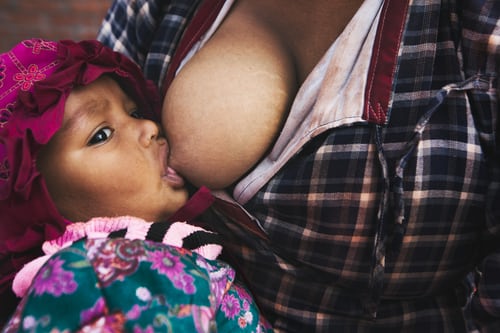By Angela Mutegi
‘A picture is worth a thousand words.’ This old adage has up until now, formed the philosophical base of many visual content creators. Even though there is a distinct difference between visuals and text, there is no doubt that visuals are powerful especially in their ability to draw attention and influence perceptions.
If indeed a picture is worth a thousand words, what is the position of the father, telling us about our family and the society? Particularly, what role has the picture played in creating current perceptions about fatherhood and their role in the exclusive breastfeeding process?
Every year, the World Breastfeeding Week that takes place in the month of August, provides an opportune time to sensitize people on the importance of exclusively breastfeeding. This year, the week begun on Wednesday, 1 August, and ended on Tuesday, 7 August.
In the past, visual images of a mother smiling while adorning an affectionate and compassionate look, as she breastfeeds her baby, bombard our social media timelines, sometimes, billboards with the breastfeeding dyad are placed strategically within the city. If we are lucky, we are treated to an occasional breastfeeding triad, where a father is included in the picture, looking pensively over the woman’s shoulder as the mother breastfeeds.
Many may argue that since fathers lack the biological capability to breastfeed, then there would be no other way of visually representing their role. Yet father’s contribution to a child’s life is equally important and distinctively different from that of a mother. The impact that the support of an infant’s father might have on exclusive breastfeeding rates has revealed that the father’s support is a major determinant to the initiation and continuation of breastfeeding. This goes without saying, that the father’s role should prominently feature in the visuals and they should portray the distinct ways the two partners contribute to the welfare of the child, and in the exclusive breastfeeding process, even though the father does not have the biological capability to breastfeed.
All is not gloom. At least evidence suggests that fathers are interested in understanding what roles they could play. What is yet to be investigated, is how images as reflected in campaign and media messages, affect fathers’ perceptions, as well as how they contribute to their masculinity beliefs. As a result, how these masculinity beliefs influence how they play a part in the breastfeeding process and infant care in general.
A recent exploratory study featuring fathers in Nairobi, that I was a part of, revealed that first-time fathers felt left out and expressed a desire to learn ways in which they could provide more support. They noted that the images they had interacted with were not designed in a way that attracted their attention and did not respond to their information needs as a father. Moreover, even advertisements that promote children’s products, such as baby diapers, wipes, and soaps, have the father of the child predominantly missing in the messages.
Visual content creators should resist from portraying a father as a passive onlooker or even altogether absent in the family picture in general, and in exclusive breastfeeding process in particular. When fathers are absent or passive in these images, it communicates that fathers are not involved partners and that they lack the capacity of being an active nurturing parent.
We, therefore, need to create a narrative in our picturing, that father’s engagement in the process does not go contrary to their masculinity, but instead commendable for fathers to be involved in the wellbeing of their family.
My take, therefore, is a picture that is worth what we frame it to be worth. Sometimes what is missing in the picture could be more than a thousand words and could have far more reaching repercussions.
Ms. Mutegi is a Development Communication Specialist at Purple Frames. angela.mutegi@purpleframes.org














